Revisiting The OnePlus 3: sRGB, Memory Management, & More
by Brandon Chester on June 30, 2016 3:00 PM EST- Posted in
- Smartphones
- OnePlus
- OnePlus 3
Display Accuracy
As I mentioned in my initial review, the OnePlus 3 targets the NTSC color gamut. I really feel the need to reiterate that this choice of gamut target makes absolutely no sense. The actual NTSC gamut was never really relevant, even back in the 1950s when it was created. This is because the phosphors used in CRT displays of the time simply could not produce such saturated colors with an adequate brightness level. In fact, most modern displays still cannot realize the original NTSC gamut. Because of this, it was assumed that content was created and should be displayed using the gamut defined by the SMPTE C specification, which is actually smaller than the sRGB gamut. SMPTE C also used CIE Illuminant D65 for the white point instead of CIE Standard Illuminant C which has a CCT of 6774K, making it more blue than the white point used in more modern color standards.
If the NTSC gamut is not a sensible target, a good question is what gamut would be? This gets back into the discussion of color management, which is something I've discussed in the past several times and don't want to tread over again in this article. In theory, it would make most sense for OnePlus to target the DCI-P3 gamut, because right now UltraHD Bluray content uses that color gamut in a Rec. 2020 container for future compatibility as displays actually move to Rec. 2020. That is why Apple is targeting the DCI-P3 gamut on their newest devices, and it's why all the high end UltraHD TVs launching this year use it as well.
Unfortunately, Android poses a problem here. Android has no color management at the system level, and so if you ship a wide gamut display you get oversaturation when viewing anything designed for sRGB, which for most people will include every single piece of content on their phone. Because of this, the only two reasonable options are to just constrain your Android smartphone to sRGB completely, or to include separate color modes that allow switching between sRGB and the wider gamut. This isn't the fault of the Android device makers, and it's clear that the inclusion of wider gamut displays is done with good intentions, but for now we have to wait on Google to bring color management to Android.
One thing I didn't do in my review was test the OnePlus 3 against the NTSC standard. Again, I feel this is mostly pointless because you will not be able to find any content anywhere that targets that gamut, but examining how well the display conforms to OnePlus's target gamut would have been an interesting exercise nonetheless. Unfortunately, OnePlus seems to have changed the white point in the normal display mode significantly with this update, which means any results I report won't be representative of how the phone was on its original firmware, or how it may be in the future. We ran into this same issue with the OnePlus One, where later updates completely changed the calibration and made it much less accurate. OnePlus has a bit of a track record of changing key device behavior after release, with another example being the browser detection on the OnePlus 2 which shut off the A57 cluster. I'm not a fan of publishing results that are subject to change with any update, and I'm not going to play the game of testing a phone again after every single update to see if things have changed, especially when changes are made but not documented at all in the update notes.
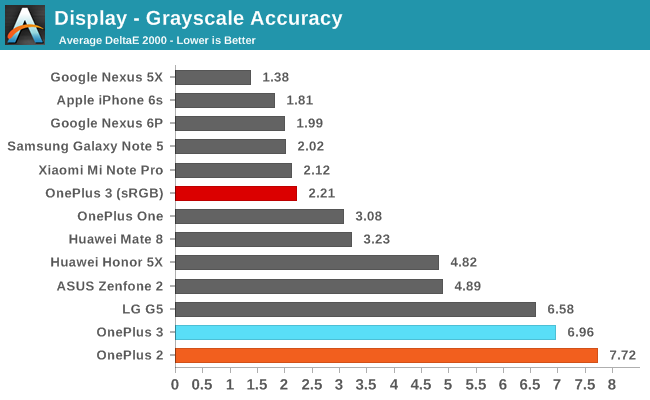
Greyscale accuracy with the sRGB mode enabled is a huge improvement over the standard display mode. The CCT average is slightly below target, but only by a tiny amount. My only complaint is that the RGB balance with the whitest shades is shifted too far toward red, and it would be good to tweak this a tiny bit to make sure 100% white is properly balanced so that the display doesn't have any sort of warm cast on webpages and in Material Design applications. Even with that, the error levels for each individual shade of grey are all at or below three, which is what we're targeting. With these changes the OnePlus 3 goes from being one of the worst displays on record to one of the best, and that's a great thing to see.
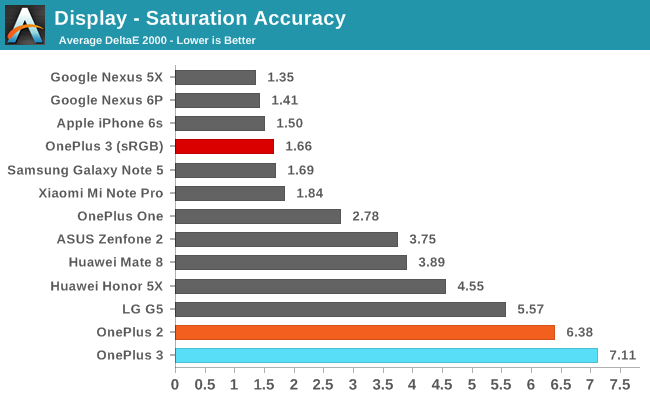
I was originally concerned that it might be too late to properly fix the OnePlus 3's display once phones had shipped, as there's a degree of variance from display to display. However, it appears that the displays, while inaccurate, were defined well enough that OnePlus knew what to tweak to constrain them to sRGB. In the saturation sweep test you can see that only two error values go slightly above three, with the rest being comfortably below.
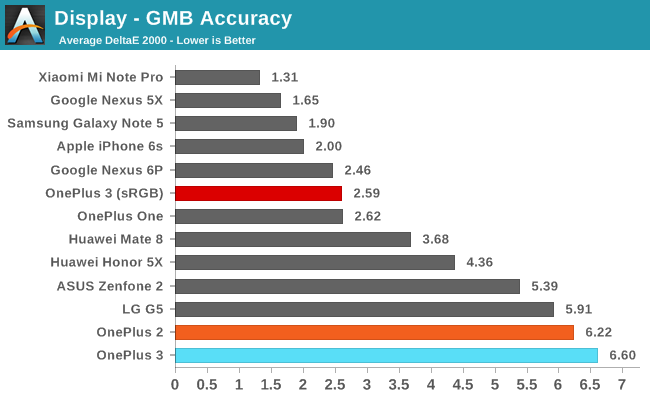
With great greyscale and saturation rendering you're usually set for accurate color mixture rendering. With its sRGB mode enabled the OnePlus 3 does a great job of rendering the colors that are part of the GretagMacbeth ColorChecker test. The error value is below our target value of three, and pushing accuracy much further doesn't bring many benefits as at this point you already can't discern the difference between the colors and their actual reference colors unless you have them sitting still beside one another.
To say that OnePlus's new sRGB mode provides a substantial improvement in display accuracy would be an understatement. The display has gone from being the most inaccurate display that I've seen in years, to being among the most accurate displays that we have on record. Gone is the ghastly blue shift, and even in the standard display mode OnePlus has toned that down significantly. The gamut matches sRGB very well, and both greyscale and color reproduction is right on target.


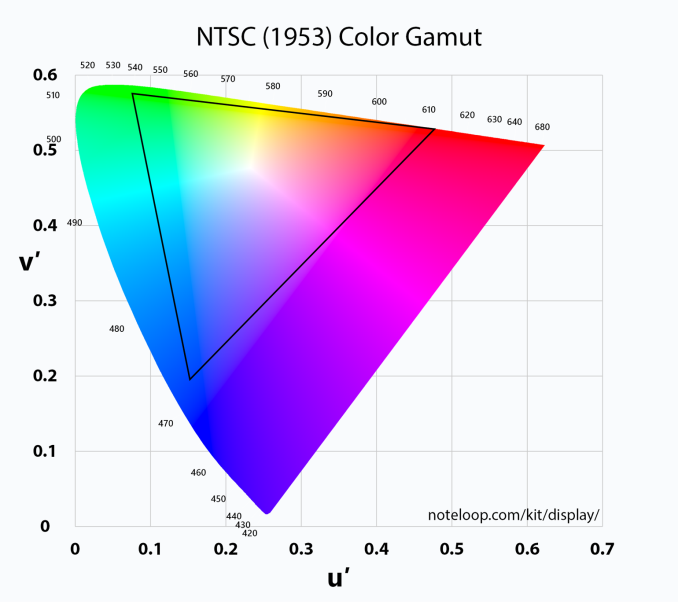
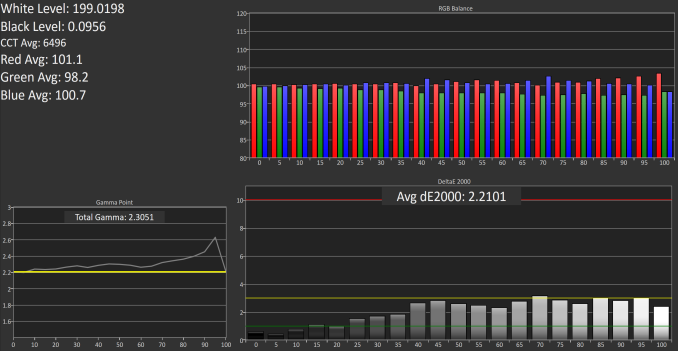

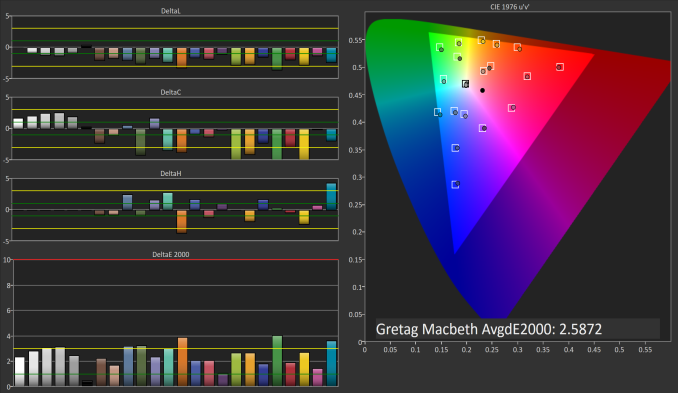








81 Comments
View All Comments
BenSkywalker - Thursday, June 30, 2016 - link
The issue at hand is they picked the MPEG of color standards- sRGB was so poor it was immediately replaced by the professional market for ARGB- in the 90s, yet Apple is just now getting around to supporting wider gamuts(Now that Rec2020 is out they move to close to the twenty year old standard).
Wanting things standardized across their product line I get- aiming for the lowest possible target I don't.
jlabelle2 - Friday, July 1, 2016 - link
- sRGB was so poor it was immediately replaced by the professional market for ARGB -I read this kind of claim all the time but people do not realize that having in real life colors more saturated than sRGB is very VERY rare. I champion every one to go out and try to take a picture where even a small area of the picture go beyond sRGB color space. It will not happen. Except if you are living maybe on a carribean island.
The reality is that what you call "poor" is still enough in 99,9% of the real cases (not speaking of artificial colors created in Photoshop).
Impulses - Friday, July 1, 2016 - link
I live in a Caribbean island... :(BenSkywalker - Friday, July 1, 2016 - link
Firetruck, eggplant- it isn't hard- tons of paints used on cars, I have a set of towels hanging in the bathroom right now- it's actually *very* easy to find objects that go outside sRGB. Even if the color is entirely inside sRGB- 256 gradients versus 1024- smoother and more realistic tones- for all pictures.
jlabelle2 - Monday, July 4, 2016 - link
- Firetruck, eggplant- it isn't hard- tons of paints used on cars. it's actually *very* easy to find objects that go outside sRGB-I take the bet. You think they go beyond but you would be surprised.
- even if the color is entirely inside sRGB- 256 gradients versus 1024- smoother and more realistic tones- for all pictures.-
Actually, it goes the other way around. Taking aRGB colors with 8bits coding (a JPEG) and transforming it in sRGB (still 8bits) means that you are potentially loosing a little bit of fine gradation info as the aRGB has to strech the 256 level with a wider range. Only if you work with TIFF or 16bits RAW files you are quite ok when manipulating / editing pictures between color spaces.
BenSkywalker - Monday, July 4, 2016 - link
JPEGs while discussing accurate calibration...... wow. That's like having a discussion about Formula 1 and you comparing it to your radio controlled car thinking that is a real comparison.http://ninedegreesbelow.com/photography/srgb-versu...
No, I wouldn't be surprised what exceeds sRGB even a little bit- *TONS* of things you see in every day life. Firetruck red and eggplants both do exceed sRGB- that isn't an opinionated statement, it is one of fact.
I brought up lots of colors cars are painted with as I'm familiar with exactly what is involved in that process- I am in no way speculating- sRGB is just trash. It is a garbage color space worthy of your JPEG format.
jlabelle2 - Tuesday, July 5, 2016 - link
- JPEGs while discussing accurate calibration...... wow -What JPEG has to do with calibration? You seem to confuse a lot of things. The encoding of the image (8bits or 16bits or more) has nothing to do with if the color is correct or not. You can have a scene with variation of colors that could be code on 2 bits and still have color completely off.
That is clear that those things are totally misunderstood by the majority of people, even "geek" people commenting on those kind of web site. It is good that Brandon is trying to educate and explain those things.
- sRGB is just trash -
Saying so does not make it anymore true. But if you are dealing regularly with that, can you provide me a picture of one of your car with a color widely beyond sRGB gamut? Should not be that difficult, isn't it?
- It is a garbage color space worthy of your JPEG format. -
This comment is showing the size of your ignorance.
JPEG is encoding in 8bits, which is the number of steps between the extreme colors (256 level on each channel).
Color space is defining the maximum color saturation of the maximum value (be it 256 on JPEG or 65536 on RAW or TIFF).
You are comparing how high is going a ladder (gamut on the color space) and how many steps it has (the encoding bits).
BenSkywalker - Tuesday, July 5, 2016 - link
JPEG as it relates to calibration is the crux of this discussion. The amount of color information in a JPEG is *extremely* limited- very easily displayed by taking any image with a range of 0-255 on any of the channels and looking at it. Very clear banding across the board. You talk about calibration- there are several billion colors that the human eye can see- the odds of you landing on exactly the right shade of any given color is akin to hitting the powerball. It may happen- but your odds of actually seeing the right color are minuscule.So what we are actually looking at is the perception of what people see based on what the image was supposed to portray. In that element, your assertion is that a very narrow color space using a very lossy file format can be calibrated to be acceptable to your standards. My assertion is quite simple- perfectly 'calibrated' sRGB showing JPEGs are laughably inaccurate- they aren't remotely close to being the actual colors- the perceived difference between them and what you want to see aligns with that particular combination. In no way comprehensible is this a matter of accuracy, we are dealing with digital information and sRGB JPEGs are close to 0% accurate when judged in absolute terms- they just are 'good enough' for your end of the discourse.
That isn't a matter of personal preference, these are binary operations- you are looking for good enough for you. That is a matter of what you are looking for- nothing is wrong with that, getting on a soapbox because your wrong way of looking at things is better then someone else's wrong of looking at things is laughable.
Fire engine red is outside of sRGB. It is one of the most common colors in widespread use for the last fifty years. I also provided you a link showing how a box of crayons fails in sRGB space.
As to your attempts at trying to differentiate that there are both issues with width and granularity in the color space- that is an elementary issue- I assume any child would understand this. Internal rendering of image spaces swapped to 128bit floating point color in many fields long ago- Adobe RGB isn't *close* to being 'good enough'- it simply is a massive improvement over the insanely poor sRGB.
My stance still stands- championing that your way of looking at horribly inaccurate images is the 'right' way and any other way of looking at horribly inaccurate images is wrong comes entirely down to perception.
jlabelle2 - Wednesday, July 6, 2016 - link
I see that you do not understand the notions developed by Brandon. I will try to explain one last time but it may be a subject to difficult for you to grasp (not trying to be pedantic but just my observation based on your feedback). So one last try:- The amount of color information in a JPEG is *extremely* limited -
What is the "amount" of information? JPEG is encoding in 8bits which means a given number of GRADATION of colors. But once again, if you have a ProPhoto or DCI3 JPEG, the level of saturation that you can code (and potentiall display) is the SAME as a 32 bits TIFF file.
- Very clear banding across the board. You talk about calibration- there are several billion colors that the human eye can see-
You are throwing a lot of different notion against the wall to see if it sticks.
First, what is your point? What do you try to say in the context of this article on constraining in the sRGB gamut a Android phone screen as Android is not color managed ?
Secondly, regarding the points you raised (for whatever reason) : yes 8 bits gives you less number of intermediate steps as more bits which means potentially more posterization when working on the image.
But generally, no, it is very difficult or impossible for the human eye to discern the difference between a 16 bits TIFF and 8 bits JPEG in term of color gradation. JPEG is allowing 16 millions discrete different colors. You are not just able to see any banding because of the limitation on 8 bits nor is able anyone on earth, despite your claim.
WHY is 16 bits important, it is because when you EDIT and CHANGE the image, then you can start to see posterization with extreme editing. So JPEG is not a problem for the display. 8 bits is a problem as a working space if you make serious editing.
I clarified this as you are confused on those notions.
- your assertion is that a very narrow color space using a very lossy file format can be calibrated to be acceptable to your standards -
It is not an assertion.
Let's not comment again on how narrow or large is the sRGB gamut. I asked you to provide a real example of a picture of yours exceeding the sRGB gamut and you are not able to provide so let's say that the burden of proof is still on yours.
JPEG can be more or less lossy depending on the compression ratio. I defy you or anybody to see the difference between a JPEG with a good quality compression ration (80 or 90%) and the original TIFF. This is like your claim that you can see in 16 millions different colors "very clear banding across the board". That is just bullsh...
And last, sRGB is not "my" standard. And yes, a LCD can be perfectly calibrated toward sRGB color space or another color space...or not. I do not even understand what you are trying to argue against?!?
- My assertion is quite simple- perfectly 'calibrated' sRGB showing JPEGs are laughably inaccurate-
This phrase does not mean anything. Either the display is perfectly calibrated and the colors it shows are accurate (by definition) or they are not.
You are basically telling me that you can have a tachymetre on a car that is perfectly calibrated to display the real speed of the car ... but the car of the speed is "laughably" inaccurate. I don't know if english is your mother tongue the phrase makes just NO sense.
- we are dealing with digital information and sRGB JPEGs are close to 0% accurate when judged in absolute terms-
you are going further in the ridicule. Claiming that you can distinguish more than 16 millions different colors and now even claiming that it you cannot code more than 16 millions, the image that you see is 0% accurate. What to tell...
I propose you a simple 2nd bet (as you declined the 1st one): you can give me any image that you want with any encoding bit size (16 bits, 32 bits), in any color space of your choice.
I will take it and make 2 versions of it: one reduced to 8 bits and saved temporarily in a 90% JPEG, and the other let at the original size.
I will then give you back both in TIFF (so you cannot tell which is which) and ask you to tell me which one is the JPEG. Please take my bet, it will be enlightening for you?
I know already that you will also refuse the 2nd bet because you must have realized by now how wrong you are but if you do not believe it still, take the bet, and you will learn something.
- I also provided you a link showing how a box of crayons fails in sRGB space.-
The link is showing in analysing the image what is going beyond sRGB. What is much more important for me is if someone is able to tell the difference. Thus my bet to you. Find me an image.
I will restrict one to sRGB, another to aRGB and send you back both in aRGB and you will have to tell which is which. Image should be yours.
- I assume any child would understand this-
I restrained myself, especially in forum, to make such comment. Although I am an engineer so those topics are for me quite elementary, I do realize they are not clear for everyone and you are a proof of it. Still, you are not a child and I understand that you could not grasp those notions.
- My stance still stands -
This is why I asked not to take my word and common knowledge for granted and propose you to realize how wrong you are by yourself. Take my 2 bets and you will have a more clear understanding how mistaken you are. If you really want to learn and progress. Otherwise, have a good day.
jlabelle2 - Friday, July 1, 2016 - link
- 30 degrees below zero pictures calibrated for sRGB white points look comically bad and insanely unnatural -Common confusion on white balance (what TrueTone on Apple devices is tackling) and the wider gamut than sRGB standard.
The issue with the OnePlus or every wide gamut screen used in unmanaged OS is that the web, 99% of the camera and pretty much most picture you received and see are done or targetting sRGB color space. Displaying them in wider gamut screen than sRGB will make them all appeared oversaturated. That is simply not good.
- every person I have asked liked the Vivid option the best -
Again a different story. you could perfectly have a screen, for which the gamut is constrained in the sRGB color space, and have an vivid option.
Let's not forget that in 99,9% of the case (in fact, on 70 000 aRGB pictures, I took, there was less than 5-6 so it is more 99,99% of the case), the images of natural things (not flashy designed logos or colors that do not exist in real life) never exceed the sRGB gamut. It is VERY rare to have in real life colors beyond. What it means is that, even in a perfectly color managed OS and workflow, the benefit of going wider than sRGB is impacting only small areas of a very tiny number of pictures.
And even on those small areas of those tiny subset of pictures, you probably cannot tell because the difference could only be spotted when seeing both side by side.
On the opposite, in the case of the wide gamut screen of the OnePlus used on non color managed OS, 100% of the pictures and the entire areas of those pictures would appear oversaturated. Always.
As such, a vivid option could still oversaturate colors, even if still constrained within the sRGB gamut. One is not mutually exclusive from the other. But at least, you give the choice to user.
For instance, i like adding some color saturation to my A7R photos. But the saturation still remains within level that exist in real life and everybody would find strange fluorescent green grass.